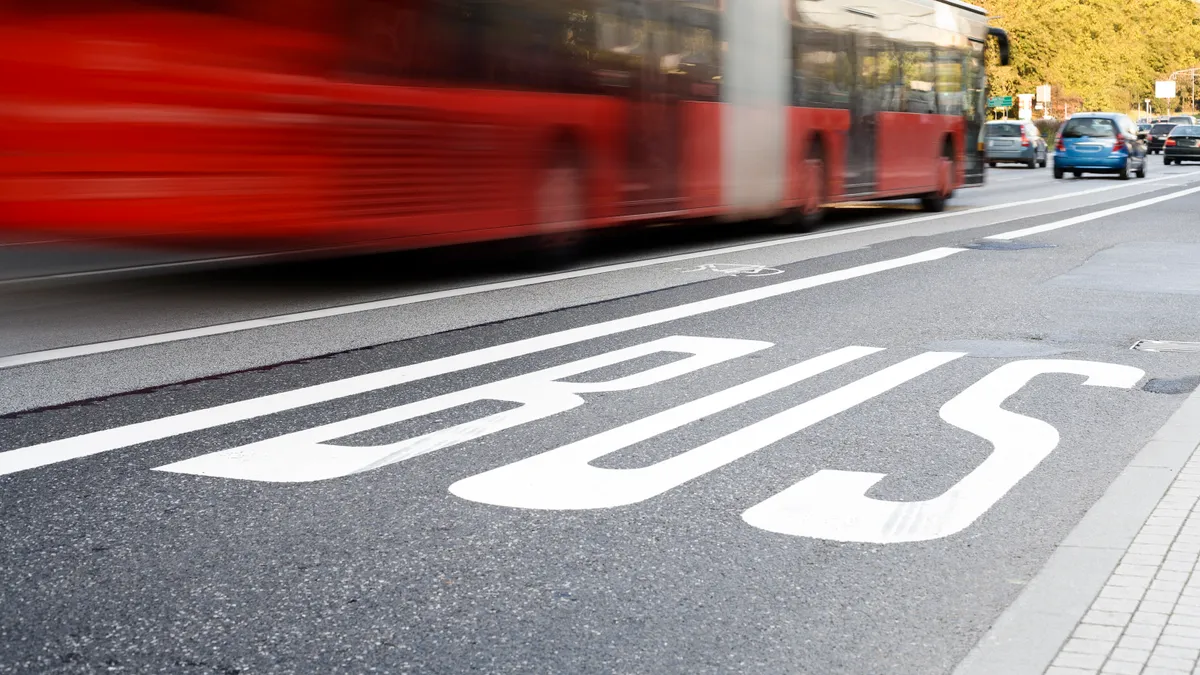Dive Brief:
-
Pedestrian and bicycle safety in bus rapid transit and high-priority bus corridors varies based on how specific design elements, such as shared bus-bike lanes, are implemented, according to an April report by the Transportation Research Board’s Transit Cooperative Research Program.
-
While some studies show that BRT systems are safer than other bus systems, such as commuter buses, other — primarily international — studies find they are associated with increased crashes, according to the report.
-
When designing bus priority systems, “each intersection, station, and even midblock area requires a unique and sometimes creative approach to maximize safety for people walking and bicycling,” the report says.
Dive Insight:
Bus priority systems, including BRT, have the potential to improve transportation access, lower vehicle emissions, increase property values, enhance economic opportunities, boost residents’ physical activity, reduce traffic congestion and curb motor vehicle crashes, the report says.
However, as federal, state and local lawmakers grow increasingly concerned about roadway deaths and injuries, it’s crucial to ensure the safety of all road users when implementing these systems, according to the TRB.
The report had several recommendations for transportation professionals and public officials to help them design, build and operate bus priority systems that protect pedestrians and cyclists:
- Coordinate closely with transportation agency partners during planning, construction and design.
- Regularly communicate with the public, businesses and others about bus priority systems and how they will affect travel.
- Design solutions that incorporate up-to-date best practices and plan to meet the needs of active transportation users “as early as possible.”
- Go beyond the Americans with Disabilities Act standards to ensure easy access for people living with disabilities.
Center-running bus-only lanes result in fewer conflicts with pedestrians and bicyclists, the report states, but station design must include high-quality crossings for passengers to access the stations safely, it says.
The report also warns that shared bus-bike lanes heighten the risk of potential conflict with bicyclists, recommending the use of alternative designs with protected bike lanes.
According to the National Highway Traffic Safety Administration, traffic fatalities climbed 10% from 2020 to 2021, with deaths among pedestrians and cyclists increasing by 13% and 1.9%, respectively. Roadway injuries among pedestrians and cyclists each rose by 11% and 7% from 2020 to 2021.
Last week, the federal government made $1 billion in funding available to help local, regional and tribal governments and metropolitan planning organizations improve road safety for drivers, cyclists, pedestrians and other road users.












